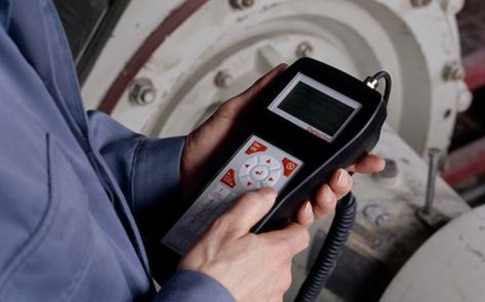
By analysing vibration data from critical plant and equipment at a UK-based energy-from-waste facility, Schaeffler has been able to detect damage to components such as rolling bearings and gears early, therefore eliminating costly, unplanned downtime and prolonging the life of motors and gearboxes.
Schaeffler UK is providing regular patrol monitoring and vibration analysis services to a UK-based energy-from-waste (Efw) facility. By analysing the vibration data from a range of critical plant and equipment at the site, Schaeffler is able to detect damage to components such as rolling bearings and gears early, therefore eliminating any costly, unplanned downtime and prolonging the life of motors and gearboxes that drive a variety of critical fans, conveyors and pumps.
Since 2012, as part of its annual service contract with the customer, Schaeffler UK has been providing regular (typically once a month) on-site vibration monitoring and analysis services to the Efw facility. The site generates electricity by burning hundreds of thousands of tonnes of household and commercial waste each year.
During each visit, a Schaeffler field service engineer takes vibration measurements on 60-70 items of equipment to identify any deterioration of rolling bearings and other general mechanical components (e.g. gears, fan blades) on a variety of critical plant and equipment at the site. This equipment includes electric motors, gearboxes, large primary, secondary and induced draft air fans, conveyors and pumps. This equipment is located on separate lines that feed separate furnaces at the site. Any unforeseen downtime to these lines would be costly, resulting in ‘lost’ production.
Vibration measurements are made and stored using Schaeffler’s FAG Detector III handheld vibration monitoring device. With its free of charge software, ‘Trendline’, which includes a database of more than 20,000 different bearing products from different suppliers, this device enables the user to collect, store and analyse vibration measurement data. Used in combination with the data viewer, the bearing database is ideal for assessing a machine’s condition.
The FAG Detector III is used to measure and record vibration data at each selected measurement position on the patrol monitoring route. The three basic measuring parameters are velocity (which responds to mechanical issues such as imbalance, misalignment and looseness), acceleration (typically used to monitor gear defects and progressing bearing defects) and enveloped acceleration (a measure of high frequency, impact-type events, typified by early bearing or gear faults).
The measurement data is then analysed by the Schaeffler field service engineer, who then writes an analysis report and recommended action list (if this is required) for the maintenance team at the site. The report typically includes Acceleration and/or Velocity Trend plots that show pre- and main alarm limits (yellow and red lines) and how the vibration data has varied over time.
David Goves, Applications Engineer at Schaeffler UK comments: “On my most recent visit, I collected vibration data over one day from 65 items of equipment at the facility. Typically, one item of equipment may include a motor driving a gearbox, pump or fan. For each item of equipment, we would typically record vibration data from the motor non-drive end and motor drive end, for horizontal, vertical and axial mounting positions, and the same for gearboxes.”
After analysing the recorded vibration data using the FAG Detector III’s Trendline software, Schaeffler was able to report on all the items of equipment and to recommend any repairs or remedial action that is required. If bearing wear is found to be the cause of high vibration levels on a gearbox, for example, this can be reported to the customer, who can then source the appropriate bearings and plan precisely when the maintenance work i.e. replacing the defect bearings can be carried out without disrupting the rest of the facility.
David Goves cites some examples: “From a recent visit, we analysed the data and compiled a report for the customer. This included a list of recommended actions on those items of equipment that had exceeded the pre-defined alarm limits in the Trendline software. For example, we advised the customer to inspect, clean and rebalance some fan blades on a large primary air fan. Over a period of several months, vibration data collected from the fan’s non-drive end motor showed a slowly increasing velocity trend, which suggested a minor issue was developing. We recommended that the fan blades were inspected, cleaned and rebalanced. The customer reacted quickly and took the fan offline to steam clean the blades in the workshop. After refitting the cleaned blades, the fan vibration and noise levels returned to their normal, pre-alarm state.”
Schaeffler UK is continuing to provide vibration monitoring and analysis services on an ongoing basis to the Efw facility.










Water Sector Talent Exodus Could Cripple The Sector
Maybe if things are essential for the running of a country and we want to pay a fair price we should be running these utilities on a not for profit...